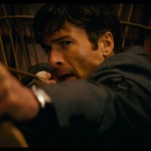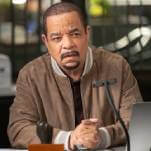Violence At Noon

Along with such celebrated peers as Hiroshi Teshigahara (Woman In The Dunes) and Shohei Imamura (The Pornographer, Vengeance Is Mine), militant provocateur Nagisa Oshima was part of a Japanese post-war movement that infused the country's austere cinematic tradition with avant-garde experimentation and grim social commentary. Shot in harsh, radically overexposed black-and-white, Oshima's punishing 1966 film Violence At Noon plays like Rashomon viewed through the crooked lens of Jean-Luc Godard, a prismatic take on rape and murder under the hot light of an interrogation room. Based on the exploits of a real-life criminal, the film concerns the peculiar bonds linking brutal sex murderer Kei Soto, his protective schoolteacher wife (Akiko Koyama), and a rape victim (Saeda Kawaguchi) who feels indebted to him for saving her from suicide. Oshima cuts freely from the police investigation to scenes from Soto's troubled history in a rural commune, where his twisted allegiances with the women first began to form. Violence At Noon never presents Soto as anything less than a monster, saving its real agenda for how modern society nurtures such deviancy and allows it to thrive unabated. Once the focus shifts to the intimate bond between Koyama and Kawaguchi, Oshima accelerates his mosaic editing, which splices together more than 2,000 individual shots over the course of the film, revealing their perspectives from a dizzying array of camera angles. Though its visceral style sometimes leads to confusion (only aggravated by the white-on-white subtitles), Violence At Noon is a searing examination of truth and how it can be both horrifying and elusive.








































